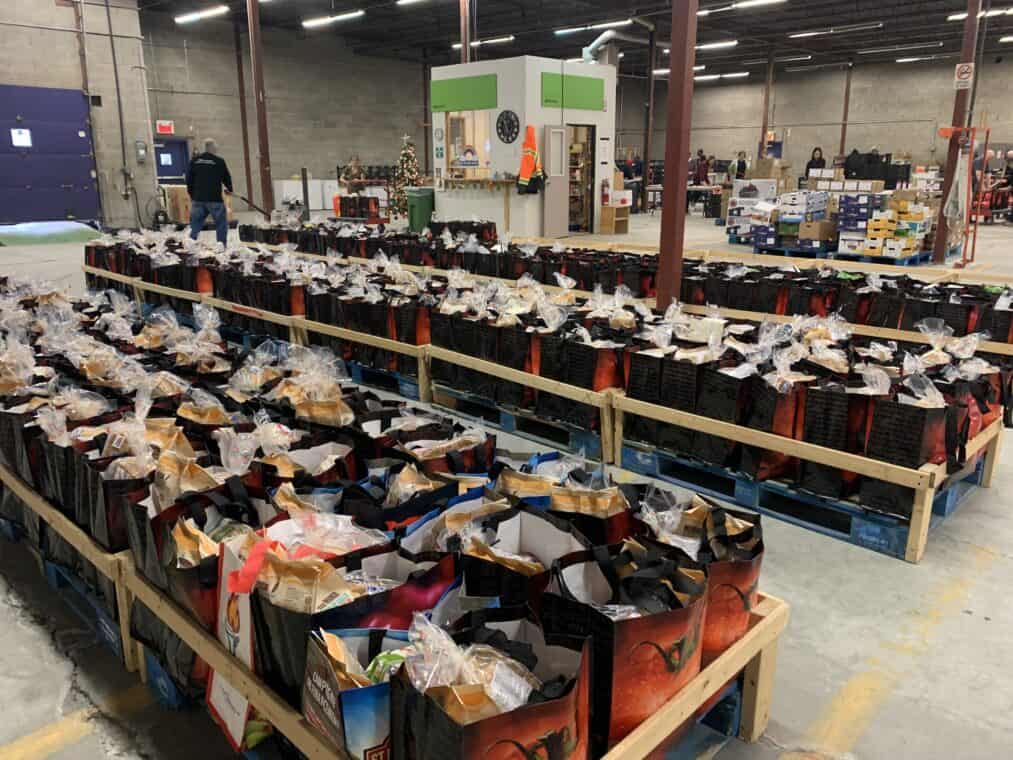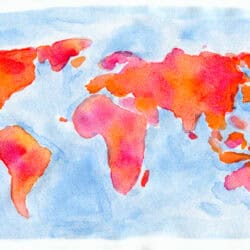In this era of fast and deep change, the boundaries and geography of poverty have changed. We need to update our indicators to address this complex reality, writes Centraide of Greater Montreal’s Claude Pinard.
“These people shouldn’t be here.” I hear this refrain more and more often at community agencies across the Greater Montreal area. It is echoed by colleagues throughout Quebec.
The last time I heard it was at a food bank in Montreal’s Côte-des-Neiges neighbourhood. The director was talking about a seemingly ordinary little family, two working parents with a young child. If you saw them on the subway, you’d never guess they needed help to get through the month. But they do.
It makes you think twice. What’s a young professional couple doing at a food bank?
Our surprise springs from ingrained assumptions. In the past, poverty in Quebec was associated with welfare, which was enveloped in unflattering stereotypes. In fact, poverty wears many faces. Each situation is unique, with its own set of challenges. But the sword of poverty is suspended above the heads of many, dominating their daily lives.
In the course of my years in philanthropy, I have realized how the boundaries and geography of poverty have changed: it is no longer confined to welfare recipients in inner-city neighbourhoods. Poverty is following broader social and demographic trends.
The picture today
The current economic climate has intensified poverty. Soaring rents, inflation, and the rising cost of living make it increasingly difficult for many to make ends meet. More than a million Quebecers struggle to get by each month. Half of them live below the poverty line, while the other half hover precariously just above it. The Greater Montreal area is home to more than half of Quebec’s low-income population, with 315,000 people earning less than the poverty threshold and more than 200,000 earning just slightly more, in the $24,000 to $26,000 a year range.
In a Léger study conducted in Quebec in September 2024 in collaboration with Centraide, 18% of respondents reported that they had experienced poverty within the previous 12 months, and 30% knew someone close to them who had. Some groups, such as people aged 35 to 54 and families earning less than $40,000 per year, are particularly hard hit. Workers and students have higher poverty rates than retirees.
But poverty isn’t just a shortage of material resources; it means relentless stress and often social isolation. According to our financial anxiety index from April 2024, 86% of Quebecers were experiencing some degree of financial anxiety, and nearly half (48%) reported significant levels.
Defining poverty, precarity, and vulnerability
Our definition of poverty has evolved, particularly in the last five years. Today, we need to rethink our understanding of this complex and escalating issue. It is time to recognize a new reality, which must usher in new definitions. Let’s look at the terms vulnerability, precarity, and poverty.
Vulnerability means a person has limited capacity to withstand economic or social crises. A vulnerable person is more exposed to the negative impacts of events such as job loss or illness, with fewer resources to fall back on. Vulnerability encompasses a wide range of factors – social, economic, and psychological. A vulnerable person isn’t necessarily poor or precarious, but a crisis can easily put them there. Resilience to various events is therefore a factor in vulnerability.
Precarity describes a state of social, financial, or material instability. People in precarious situations lack the resources to secure their future, putting them at risk of falling into poverty if something goes wrong.
Poverty is a state in which a person lacks the resources to meet basic needs: food, shelter, clothing, transportation. This generally means living day to day, gnawed by anxiety about the future. Poverty brings chronic stress and, all too often, social isolation, compounding the hardships it creates.
The serious social crises we face today, notably the housing crisis, are pushing many vulnerable people into precarity.
In the past two years, as I’ve met with community agencies and donors, I have often used the term “people in vulnerable situations” when describing the impact of the pandemic and inflation on individuals with scant financial resources. The serious social crises we face today, notably the housing crisis, are pushing many vulnerable people into precarity. We can also point to the rise of precarious jobs and the climate crisis. Consider a person who loses the contents of their refrigerator in a severe storm and has to turn to a food bank because they lack the resources to restock.
Updating poverty indicators
Centraide believes it’s time to ask whether our poverty metrics are still adequate.
The official poverty rate, based on Statistics Canada’s “market basket measure” (MBM), is falling. Yet there have never been so many people experiencing homelessness on our streets, and food banks have never been so busy. This disconnect between statistics and reality suggests that the MBM may underestimate the true extent of poverty. It fails to capture many people who are just above the official poverty line but live in teetering precarity.

Statistics Canada is currently reviewing the MBM. Some have suggested using other indicators to measure poverty, such as a deprivation index or low-income measures. While no indicator is flawless, the MBM is the one that draws the poverty line at the lowest level. The information sheet on the proposed bill from Quebec’s Ministère de l’Emploi et de la Solidarité sociale (employment and social solidarity) rightly states that several aspects of the system no longer reflect today’s reality and that modernization is overdue.
The goal should be combating poverty and exclusion as such, not just reducing the numbers of the ‘statistically’ poor.
Centraide recommends updating the indicators used to gauge our progress in fighting poverty as well. The goal should be combating poverty and exclusion as such, not just reducing the numbers of the “statistically” poor.
Poverty is a multifaceted problem that affects individuals in different ways. It looms as a constant threat, shaping the daily lives of too many. Tackling poverty requires a comprehensive approach that acknowledges the specific challenges of different populations. There is an urgent need for social and affordable housing and support for people experiencing homelessness or precarity.
The urgency of fighting precarity
To build a more compassionate society, we must confront both the causes and effects of poverty. If there is one battle in which we cannot afford to aim low, it’s the battle against poverty. Lowering our sights will only swell the ranks of those without the means to better their lives.
To return to the small family at the food bank, more than 50% of their income goes to housing, leaving almost nothing for other necessities, such as school supplies for their child. They are one of 500,000 families in Quebec living in precarity, with no cushion, no room for the unexpected.
I have yet to meet anyone who is happy to rely on food banks to survive. Everyone I meet wants to be a full member of the community who contributes to society with pride and dignity.
Poverty today has spread beyond outdated stereotypes to touch families and individuals from all walks of life. We need to update our poverty indicators and adopt a comprehensive, inclusive approach that can effectively address this complex reality. By working together, we can hope to build a fairer, kinder society where everyone can live in dignity, without fear for the future.


